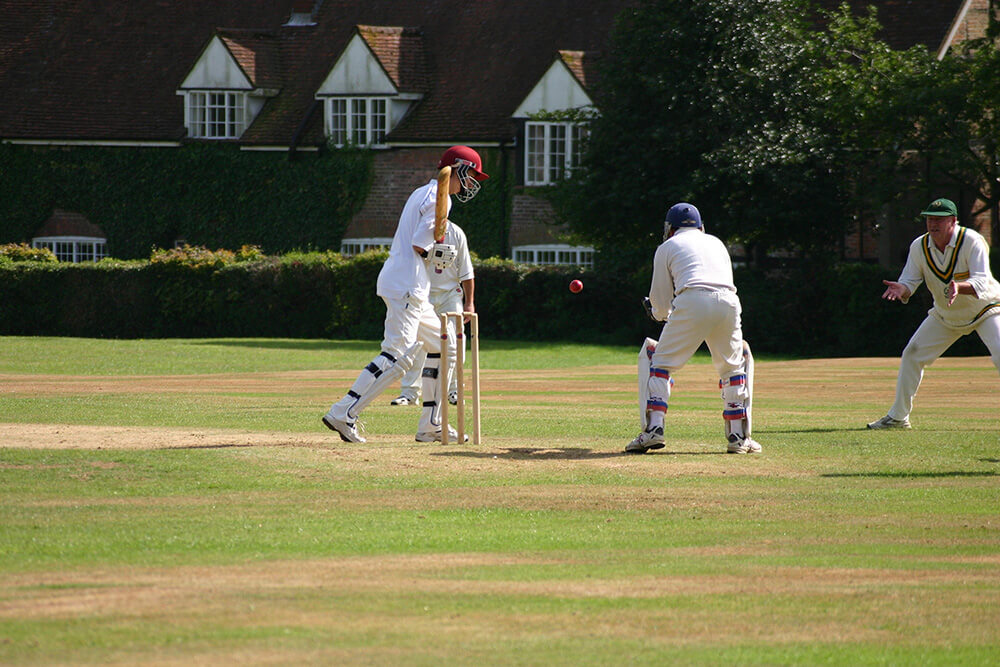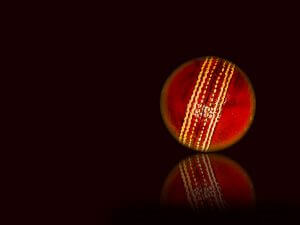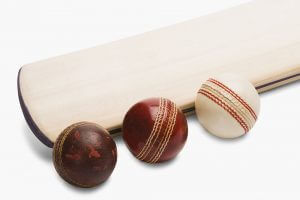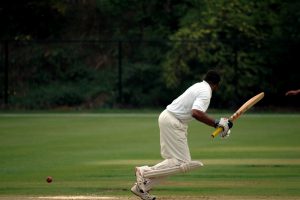What is Duckworth-Lewis Method in Cricket?

The Duckworth-Lewis method in cricket is a math formula used for target score calculations in limited overs matches affected by rain. It was originally formulated by English statisticians Tony Lewis and Frank Duckworth and was first implemented in 1997. In 2015, Steve Stern, an Australian academic, updated this formula and, therefore, since then it has been known as the Duckworth-Lewis-Stern (DLS) method.
Contents
Why DLS Formula is Required
It is not always possible to have a day in reserve for limited overs games interrupted by rain. Thus, it is necessary to use a method like DLS to calculate the target scores and make sure the game’s final results are fair. This formula has received quite a few updates and is considered to be a rather accurate method.
Because of the rain, the amount of Team B’s innings gets limited to 30 overs which means they need to get only 120 to win the game. As a result, team B get an advantage as they need to maintain the run rate through a smaller number of overs, enjoying the benefit of keeping all their wickets in hand. So, the ARR formula favoured the chasing team and was, therefore, biased.
The MPO (Most Productive Overs) Method
During the 1992 World Cup in Australia the MPO method was used. The main principle of this formula was to reduce the target by removing the runs posted by the batting team in their most economical overs. For instance, consider that Team A score 250 runs in 50 overs. Team B’s number of innings is limited to 25 overs due to rain and they have to beat the number of runs scored by Team A in their most productive 25 overs.
Team B are disadvantaged because the best 25 overs they delivered are completely ignored. For example, if Team B bowled 25 maiden overs then they would need to score 250 runs in 25 overs which is not fair. Therefore, Team B get penalised for bowling well. This proves the unfairness of the MPO method towards the team batting first.
The flaws of the formula became infamously clear in the 1992 World Cup semifinal match between South Africa and England. South Africa was chasing England’s 252 and required 22 in 13 deliveries when the rain stopped the game for a few minutes. The umpires determined the two lowest-scoring overs by South Africa that totaled 1 run. This was rather absurd as South Africa had 21 runs off just one ball. Such unfair result inspired the cricketing society to find a more accurate method.
WhatWhat is the DLS Method?
ARR and MPO methods do not consider the wickets in hand of the chasing team. The DLS formula addresses this concern and takes both overs and wickets into account, considering these factors for the target score calculation.
How How does DLS Work?
DLS formula calculates the number of runs a team would have scored if both sides had had equal resources (overs and wickets). The following formula is used to calculate a targe: The chasing side’s (Team B) par score = The first-batting side’s (Team A) score x (Team B’s resources/Team A’s resources). During international cricket games, a computer program is used to obtain the resource values.
How does DLS Work?
DLS formula calculates the number of runs a team would have scored if both sides had had equal resources (overs and wickets). The following formula is used to calculate a targe: The chasing side’s (Team B) par score = The first-batting side’s (Team A) score x (Team B’s resources/Team A’s resources). During international cricket games, a computer program is used to obtain the resource values.The DLS formula also considers the possibility that a team batting before the match was interrupted might have scored more aggressively if they had known beforehand that the game would be stopped. However, the method’s weightage of wickets and overs is still not perfect because it cannot qualitatively estimate individual batting skills.
It was supposed for a long while that in the original D-L formula, it would be smart for a team chasing a big total to keep wickets in hand, if it was clear that the rain was about to start even if it led to scoring at a lesser rate. In this regard, the method was readjusted by Steve Stern to reflect changing scenarios is high-scoring T20s and one-day games.
How to CalculaHow to Calculate the score with DLS Method
a is based on the rule that a batting side possesses two resources when beginning their ODI innings: 10 wickets and 300 balls. During the innings, there is an ongoing constant depletion of the resources the amount of which eventually reaches zero when a team loses all their wickets or plays out all 300 deliveries.
If the rain interrupts the match, the batting side loses deliveries, thus, they will be unable to use their resources in full. The DLS method, therefore, revises targets in a manner proportional to the resources’ amount available to each side.
The rate of resource depletion isn’t consistent throughout the overs and varies based on ODI scoring patterns which are calculated by analysing games over many years. The resources wasted because of an interruption depend on:
- Wickets in hand at the moment of interruption
- Innings stage when there are lost overs
- Number of lost overs
Duckworth-LewisDuckworth-Lewis Formula
ers lost in the final phases of an innings will affect the batting side more than the overs lost earlier. The reason is that the final overs are typically more productive and it is also more difficult to recalibrate the target in the later stages of the innings. For instance, a side that has lost 2 wickets after 25 overs will be better off compared to a team that has wasted 6 wickets at that stage.
The team that is two down can, thus, capitalise better on the last 25 overs compared to the side that has lost six wickets. However, the formula cannot consider the abilities of the dismissed batsmen and those who are yet to bat.






